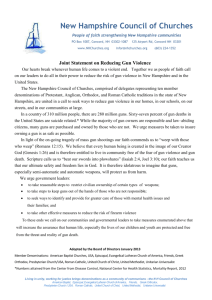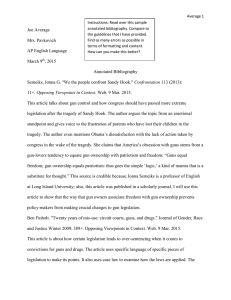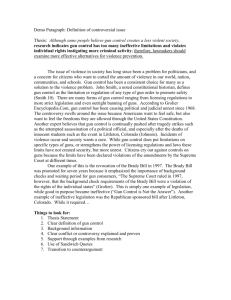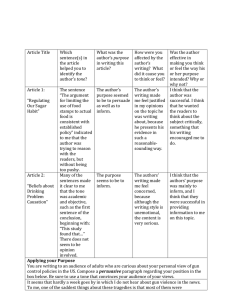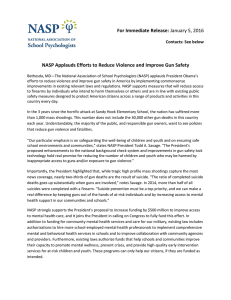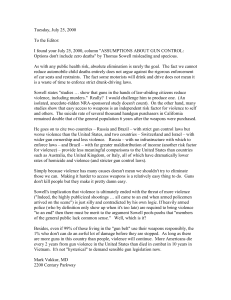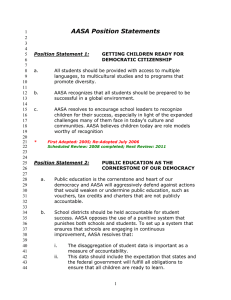AASA Position Paper on School Safety
advertisement
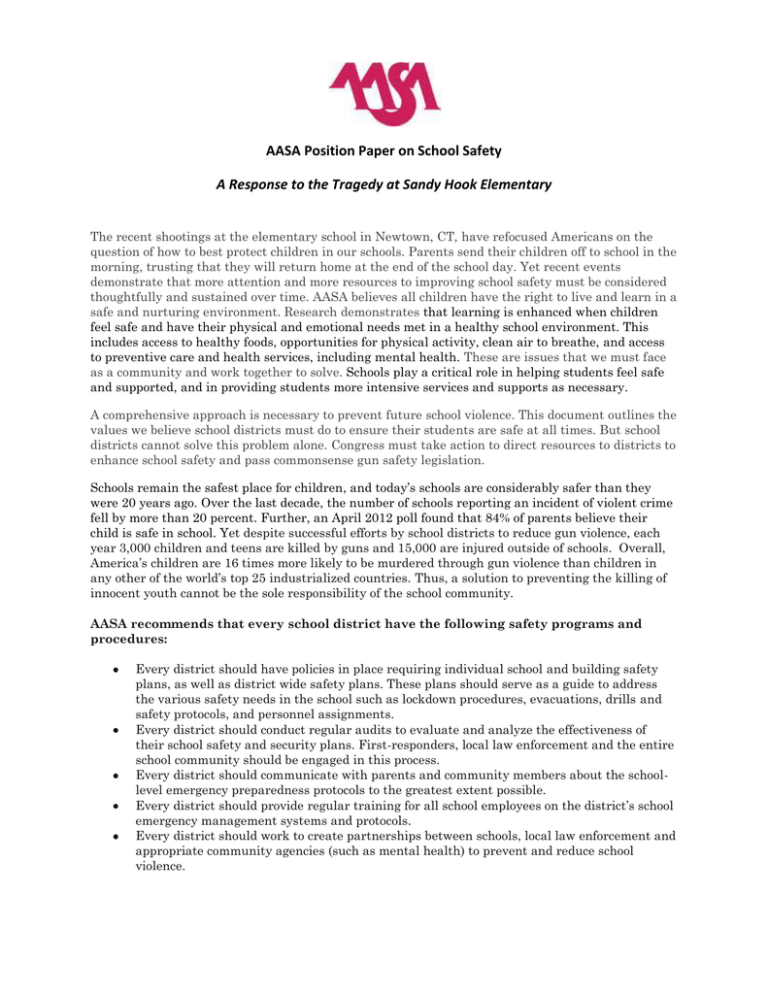
AASA Position Paper on School Safety A Response to the Tragedy at Sandy Hook Elementary The recent shootings at the elementary school in Newtown, CT, have refocused Americans on the question of how to best protect children in our schools. Parents send their children off to school in the morning, trusting that they will return home at the end of the school day. Yet recent events demonstrate that more attention and more resources to improving school safety must be considered thoughtfully and sustained over time. AASA believes all children have the right to live and learn in a safe and nurturing environment. Research demonstrates that learning is enhanced when children feel safe and have their physical and emotional needs met in a healthy school environment. This includes access to healthy foods, opportunities for physical activity, clean air to breathe, and access to preventive care and health services, including mental health. These are issues that we must face as a community and work together to solve. Schools play a critical role in helping students feel safe and supported, and in providing students more intensive services and supports as necessary. A comprehensive approach is necessary to prevent future school violence. This document outlines the values we believe school districts must do to ensure their students are safe at all times. But school districts cannot solve this problem alone. Congress must take action to direct resources to districts to enhance school safety and pass commonsense gun safety legislation. Schools remain the safest place for children, and today’s schools are considerably safer than they were 20 years ago. Over the last decade, the number of schools reporting an incident of violent crime fell by more than 20 percent. Further, an April 2012 poll found that 84% of parents believe their child is safe in school. Yet despite successful efforts by school districts to reduce gun violence, each year 3,000 children and teens are killed by guns and 15,000 are injured outside of schools. Overall, America’s children are 16 times more likely to be murdered through gun violence than children in any other of the world’s top 25 industrialized countries. Thus, a solution to preventing the killing of innocent youth cannot be the sole responsibility of the school community. AASA recommends that every school district have the following safety programs and procedures: Every district should have policies in place requiring individual school and building safety plans, as well as district wide safety plans. These plans should serve as a guide to address the various safety needs in the school such as lockdown procedures, evacuations, drills and safety protocols, and personnel assignments. Every district should conduct regular audits to evaluate and analyze the effectiveness of their school safety and security plans. First-responders, local law enforcement and the entire school community should be engaged in this process. Every district should communicate with parents and community members about the schoollevel emergency preparedness protocols to the greatest extent possible. Every district should provide regular training for all school employees on the district’s school emergency management systems and protocols. Every district should work to create partnerships between schools, local law enforcement and appropriate community agencies (such as mental health) to prevent and reduce school violence. AASA recommends Congress take the following steps to enhance school safety: Reinstate funding for the Safe and Drug Free Schools program. Schools and states annually pay billions of dollars to address the results of substance abuse, school violence and unaddressed mental health needs through local and state funding. Reinstatement of the Safe and Drug Free Schools program represents an important federal investment in successful prevention and intervention efforts. Re-establish funding for the Readiness and Emergency Management for Schools grants designed to help schools prevent and manage emergencies. Restore funding for programs such as the Secure our Schools grant program and the COPS in Schools program, which provided grants for security equipment, security assessments and school resource officers. Increase funding for mental health counselors and services in schools. Access to these services is a crucial component of any effort to prevent/respond to a school emergency. Ensure existing federal policy gives local school districts the flexibility to use resources to fund student services personnel (including counselors, psychologists and therapists). Wrap‐around services are central to addressing the needs of the total child, and flexibility in existing federal policy will better enable local school districts to use limited federal dollars in a way to maximize student support. Provide funds for districts to upgrade their facilities if internal safety audits require improvements. AASA recommends Congress pass commonsense gun safety legislation that will: Increase enforcement of existing gun laws Reinstate the ban on the sale, import, transfer and ownership of assault weapons Ban large-ammunition magazines Require thorough background checks for all gun purchasers End the “gun-show” loophole Prevent individuals convicted of violent crimes from being able to purchase guns Prevent individuals with mental health issues from purchasing or owning a gun (18 U.S.C. 922 (g)) Punish irresponsible gun owners We cannot make our schools armed fortresses. Whether to bring police officers into schools should be decided on a school-by-school basis. We oppose efforts to bring more guns into our schools by teachers and administrators. American schools are large buildings designed with many doors for other safety reasons, and it is unreasonable to assume that a school resource officer will always be able stop a determined shooter with an assault weapon and a large ammunition magazine. Unless we eliminate the easy access to weapons and increase the limited access to mental health care, the conditions that produced this horrific murder of educators and children will be unaddressed. If we hope to prevent future tragedies at schools, we must comprehensively address both school safety and gun safety. Increased mental health services, community supports for youth, and new attitudes about violence in our entertainment must all be part of this approach. We must be willing to spend the time and resources necessary to make sustainable changes. AASA hopes that school leaders find ways of enhancing their current school safety procedures as outlined above, but we know federal funding is critical to ensuring schools remain the safest place for children to be. The time to address school safety is now.

